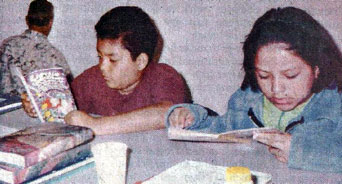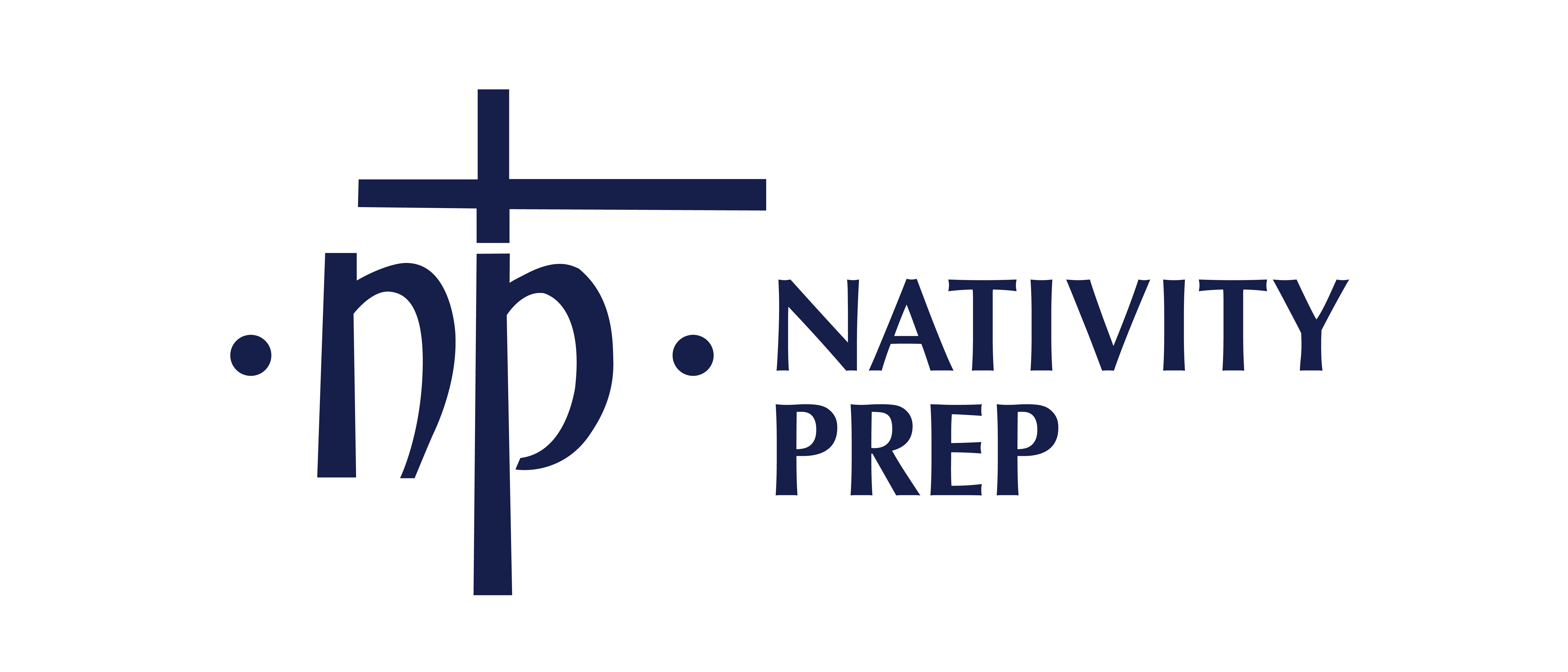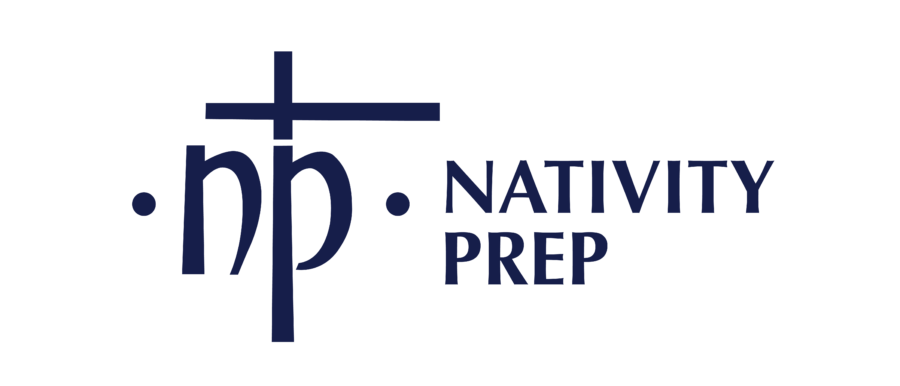A New School’s Formula For Success: Nativity Prep Academy targets low-income, at-risk students
San Diego Daily Transcript ( November 1, 2001)
By Michelle Cadwell Blackston

These students at Nativity Prep Academy take part in specially designed education programs such as rational problem solving and critical thinking.
San Diego—David Rivera spent a year studying San Diego schools. From Census data, he color-coordinated a map of Logan Heights neighborhoods with poor-perform students and families living below the poverty level to find the area most challenged.
He sought to open a school that would focus on small class size, intensive academic programs and college prep education. Rivera also wanted the school to be Catholic and no-cost to the families.
Nativity Prep Academy opened in September in Logan Heights with 24 low-income, at-risk children in grade five. The school will eventually expand to include all middle school grades and high school.
It took a tremendous amount of legwork on behalf of Rivera and others to open the school, hire and train teachers, and enroll students, Through the University of San Diego, where Rivera received his undergraduate degree, and AmeriCorps, the school landed 10 volunteer teachers for two years. USD is giving the teachers, most of whom are recent college graduates, free enrollment in the master’s degree program in the education department as well as credentials to teach in California. They also teach at neighboring Logan Elementary and St. Jude’s Academy part of the time to learn to identify at-risk children.
Rivera, a graduate of Notre Dame Law School, is Nativity Prep’s fund raising coordinator and said it’s challenging just getting in the potential donor’s door.
“The idea sells itself,” Rivera said. “Getting in front of donors after 9/11 is very difficult. All of the investing is going back east.”
The Nativity model originated in New York City from Jesuit priests who sought to end the cycle of urban crime, drugs and poverty during the 1950s. The year-round schools maintain 12-hour days from 7 a.m. to 7 p.m., small classes, daily tutoring, prevention programs and classes; on Saturdays. Nativity schools around the country send 90 percent of their students to college.
To get his idea off the ground, Rivera approached Brian Bennett, who worked on the state school voucher initiative and opened schools in underserved areas, throughout California. Bennett previously was a school principal as well as an attorney. Bennett and Rivera recruited Bob Heveron to be principal and other community leaders to support the novel educational approach including Robert Hoehn of Hoehn Motors, who donated $60,000 to the cause.
The curriculum involves teaching basic social skills such as telling the truth, following instructions, controlling anger and disagreeing politely. It also instills rational problem solving and critical thinking. In addition, the students are fed three meals a day.
“They’re really good kids and have a genuine interest in being successful,” Bennett said.
He also said it’s important for the teachers to interact with the families and community members who become the voice of the school. As part of the AmeriCorps program, all 10 of the volunteer teachers live a block from the school in a rehabilitated house for free.
Before the school opened, the teachers canvassed the neighborhood for three weeks to talk to families about the program and enroll students. The school has rolling admissions and accepts new students on a need basis.
Most of the families in the area are Hispanic, Rivera said, and have yearly incomes of about $20,000. The transient nature of the community makes it difficult for traditional public schools to keep track of the students, he said. With only 24 children, Rivera knows the students’ families, where they live and their financial situation.
Principal Heveron said the students are typically at least two years below their grade level on tests and at the 20th percentile in both reading and math. They plan to test the students to see their progress each year and assess what programs are successful.
The San Diego Literacy Council donates books and reading materials to the schools. San Diego-based company Sandicast gave $75,000 before the school was open. The school collaborates with other nonprofit organizations including local parishes, Girls & Boys Town for at-risk training, Family Health Centers for on-campus health care and Big Brothers and Big Sisters mentor programs.
The school now needs to raise money to sustain programs, Rivera said, and keep the vision moving forward.
“Child poverty in San Diego has doubled in the last 20 years,” Rivera said, adding that he surrounds himself with experienced and “talented people who are as dedicated as he is to helping children succeed.”
“There will always be young people with needs,” Heveron said. “We’re providing an option to people who do not have options.”


